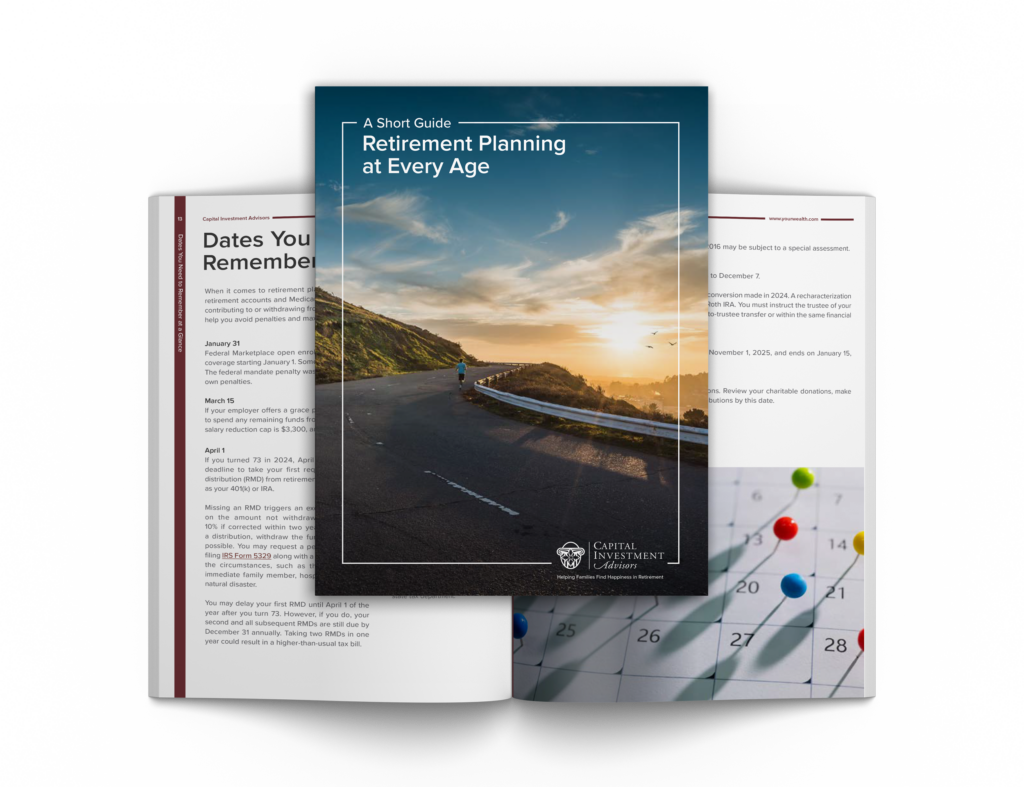As host of the Money Matters radio show and Retire Sooner podcast, I try to stay plugged into what my listeners have on their minds. To that end, my team and I set up a Retire Sooner Hotline (800-805-6301) so folks can call in to ask anything under the sun. And ask they did! We recently had some topical and evergreen retirement questions, so the time was perfect for answering them. Chances are, others have similar questions. After all, the happiest retirees on the block share a vivacious sense of curiosity.
The first question came from Andrew.
“Hey, Wes. What are your thoughts on having a 100% stock portfolio even up through and to retirement?”
I love the question and the idea as long as people know the risks. History shows that stocks tend to yield higher returns over time, but they can be more volatile than other holdings like bonds and other fixed-income products. The risk can ultimately affect your financial and mental well-being if you don’t limit your exposure.
Until recently, the interest rate on bonds had been so low that many found them unattractive. But bonds are predicated on current interest rates, and as we’re all painfully aware, the Fed has been steadily raising those. So, if you’re an income investor today and don’t want all your eggs in the equity/stock basket, bond yields are the best we’ve seen in a long time.
As much as I’d love to tell Andrew to shoot for the moon and hope for the best, the responsible answer is that it’s essential to have something other than stocks in your portfolio and have some dry powder in your portfolio.
What exactly do I mean by dry powder? The term dry powder refers to the historical necessity of keeping moisture from gunpowder in battle. I imagine there’s nothing scarier than scoping an advancing army only to realize your musket won’t fire because of the rain. In finance, dry powder means the cash reserves a company or individual maintains to meet obligations in times of economic stress — the various ways to fill your cash (savings, money market, CDs) and income (treasuries, municipal and investment-grade bonds) buckets.
Holding a diversified portfolio that includes dry powder can help you maintain discipline and sleep well at night when volatility strikes.
People typically have more dry powder like bonds and treasuries as they near or enter retirement. A target date retirement fund automatically downshifts the percentage of stocks and accelerates the more conservative allocations with time. An eighty-twenty stock-to-bond ratio might be appropriate at an earlier age during prime working years but not realistic once you get to or close to retirement.
To sum up, I love Andrew’s ambition and drive as long as he understands the risks associated with that type of portfolio.
Next, Jenny had a question about Roth IRA conversions.
“Hello. I just had a question about converting IRA money into a Roth IRA in a massive amount of as much as you can — a lot of money in transfers to negate taxes in the future. Is it okay to convert massive amounts?”
I’m glad Jenny reached out because Roth conversions are a hot topic. The reason you’d want to convert a traditional IRA into a Roth IRA is that there are certain tax advantages you can receive with the Roth IRA. You can invest that money in a tax-sheltered container that can later be withdrawn tax-free. Furthermore, the IRS doesn’t mandate required minimum distributions (RMDs) from a Roth. I’d certainly be interested if we could all transfer limitless funds into Roth IRAs, but it’s not that simple. There are other factors to consider.
First, figure out your tax bracket today and which one you think you’ll be in tomorrow. The answer to that comes into play once we consider the following component: paying the taxes that come along with a Roth conversion.
The money converted to a Roth counts as income for that year. Let’s say you earned $70,000 annually at your job in 2022. Converting $50,000 from a traditional IRA to a Roth would increase your MAGI (Modified Adjusted Gross Income) to $120,000. If you are married and filing jointly, that difference would bump you to a higher tax bracket. Instead of paying 12 percent income tax, you’d be paying 22 percent. Ouch!
Another aspect to consider is the state of the markets. It’s better to convert when the markets are down because you’re essentially taking money from one retirement account and putting it in another, hoping for a later rebound. But this is where it gets complicated. In general, a Roth conversion makes sense if you’re in the 20 percent bracket today and will be in the 25 percent bracket when you retire. But, the inverse is also true. If your tax bracket will be much lower in retirement, a conversion today may not make sense.
There’s a lot to think about here, but the upshot is that with the markets down, it’s a good year to at least consider the conversion option. As you do, remember that the more we convert, hypothetically, the more immediate pain we’ll feel come tax time. So, folks often elect to convert smaller, more measured amounts to their Roth each year. That way, they aren’t stuck with a giant bill.
I’d have to know the exact situation in answering Jenny’s question about moving massive amounts. In rare cases, people have enough of a loss to report elsewhere that it cancels out the income reported from the Roth conversion.
The bottom line is to look at taxes today vs. taxes tomorrow. Then, figure out which one benefits you more. As always, speak to your CPA or personal tax advisor about your specific situation.
Finally, Bob brought up something called Tax Loss Harvesting, which is pretty cool once you understand it.
“Good morning, Wes. This is Bob from Norcross, Georgia. I was talking with my financial advisor the other day, and he mentioned a tax strategy called ‘Tax Loss Harvesting.’ Could you talk about that a little bit and give me an idea of what it means exactly?”
Tax Loss Harvesting is a tool designed that helps you chisel away capital gains taxes.
Sector divergence is common in the market, even in a good stock market year. For example, in 2022, technology investments have struggled, but energy equities have thrived. In a diversified portfolio, most likely investors have had some winners and some losers.
So how does tax harvesting work? Remember, this only works for taxable accounts like brokerage accounts you can open with Fidelity, Schwab, Vanguard, etc. Retirement accounts — IRAs, 401(k)s — are typically excluded for tax loss harvesting purposes.
Let’s say you sold a booming stock in your brokerage account mid-year for a gain of $20,000. Come year-end, you would be liable to pay taxes on that long- or short-term gain of $20,000. Chances are, after a down year like we have seen in 2022, you may have a few positions in your account that you could sell for a loss. Maybe you even had a stock showing a loss of $20,000. You can sell that stock for a $20,000 loss, and that would offset your gain of $20,000.
Maybe you still think the stock you sold for a loss is a good stock and you want to buy it back. That’s okay as long as you wait the thirty days mandated by the wash-sale rule. The IRS put that in place to keep folks from creating a deductible loss purely to offset gains on a short-term basis.
It’s hard to have a blanket answer to cover the spectrum of tax loss harvesting options because of the potential tax loss carrying forward. The road can get rocky, so I typically recommend sitting down with a CPA (Certified Public Accountant) or financial advisor to make sure you drive with caution and swerve when necessary.
Thanks for the question, Bob! Stop by and see us if you’re ever in the Sandy Springs area.
No matter how many tax losses you harvest or traditional IRAs you convert to Roth, I wish you all a great holiday season. If you have a question on your mind, call the Retire Sooner hotline (800-805-6301). Your financial questions keep me focused on my mission to help folks retire sooner and happier than they thought possible.
And if you’re looking for a happy retirement heading into 2023, pick up a copy of my book What the Happiest Retirees Know: 10 Habits for a Healthy, Secure, and Joyful Life.
Disclosure: This information is provided to you as a resource for informational purposes only. It is being presented without consideration of the investment objectives, risk tolerance or financial circumstances of any specific investor and might not be suitable for all investors. Past performance is not indicative of future results. Investing involves risk including the possible loss of principal. This information is not intended to, and should not, form a primary basis for any investment decision that you may make. The information contained in this piece is not considered investment advice or recommendation or an endorsement of any particular security. Further, the mention of any specific security is solely provided as an example for informational purposes only and should not be construed as a recommendation to buy or sell. Always consult your own legal, tax or investment advisor before making any investment/tax/estate/financial planning considerations or decisions.










